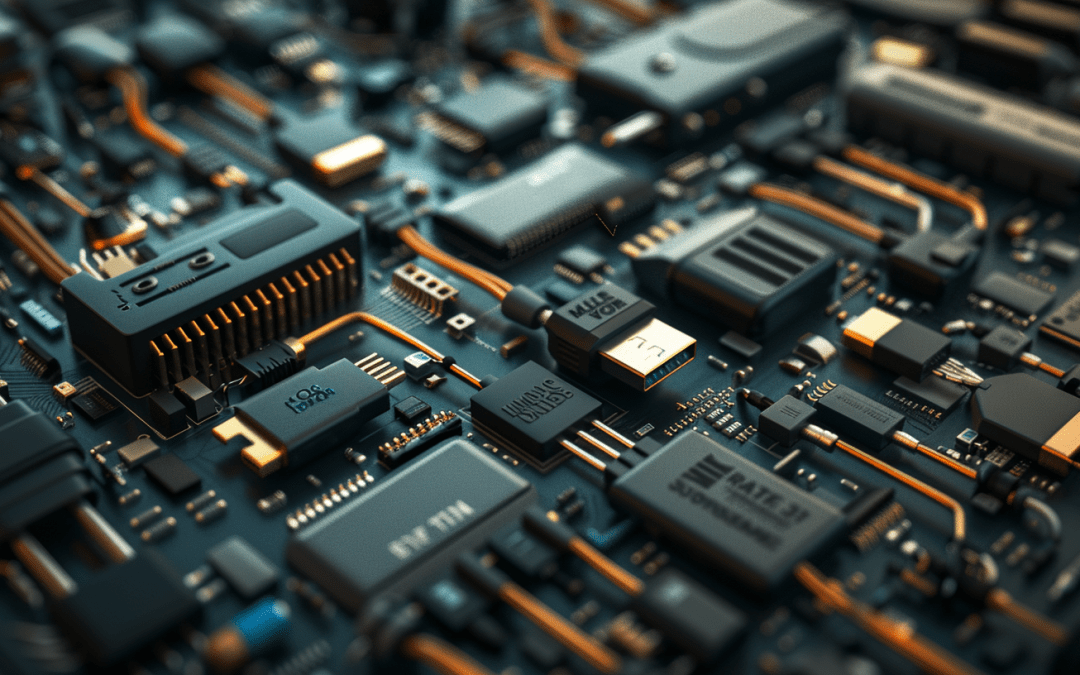The final list to know them all
“Pen drive”, “memory stick”, for those less attentive: “VHS”… We have given many names to what we actually meant by USB. But you have to know that the term goes a little beyond that gadget of four or eight gigabytes that we use for so many things. In fact, there are several USB types, and today we will delve into getting to know them.
USB Types: What is a USB?
First we should make clear that, as many suspected but few dared to inquire, the acronym USB is derived from the corresponding words: Universal Serial Bus. USB is a connection protocol that allows us to connect several peripheral devices to an electronic device to achieve an exchange of data. It can also be useful to carry out some operations or charge the battery of our devices. It is, then, like a port that works as a connection socket between different devices.
The range of devices that we can interconnect to a computer thanks to USB is quite wide. We just have to think a bit so that they all come to our heads immediately. Mouses, keyboards, video and photo cameras, smartphones, USB memories, music players, webcams, speakers, printers, recorders, external hard drives, PDA… There are countless examples.
We owe this protocol to the fruitful 1990s, a wonderful decade for Britpop and for technology. It was seven large technology corporations (Intel, IBM, Northern Telecom, Compaq, Microsoft, NEC and Digital Equipment Corporation) who joined hands to reach an agreement on the peripheral connection standard for a computer. The idea was good for everyone, and although they started with a first model, USB 1.0, different from the current ones, everything was just a matter of evolution.
Standards
USB devices are classified into four types based on their data transfer speed: Low Speed (1.0), Full Speed (1.1), High Speed (2.0) and Super High Speed (3.0).
- USB 1.0. It was the one that appeared in the mid-nineties. The maximum speed at which information could be transferred was 1.5 Mbps. Well, it could be used for connecting devices like the mouse and keyboard for example.
- USB 1.1. The transfer rate increased to 12 Mbps.
- USB 2.0. It is undoubtedly the most widespread standard and sends data at a speed of 480 Mbps, although its actual rate is 280 Mbps. In the cable you may find four lines: two for data transfer and two for power.
- USB 3.0. We can consider it about ten times faster than 2.0. It reaches speeds of 4.8 Gbps. The best thing is that it is still compatible with the previous ones and on top of that, it includes five additional contacts. At present, it coexists with 2.0. in perfect harmony.
- USB 3.1 It is the last of the standards. In fact it emerged just a few years ago. It reaches a data transfer speed of 10 Gbps. As an incentive, it comes with a new type of connector, connector C.
Types of connectors
Now we go to the shapes of USB, which is why we are more familiar with them.
Type A. It is the one that most users will recognize. That flattened rectangle in which we can see internal connections. The male connector is at the end of the cables, while the female is the port itself.
Type B. The ports and connectors belonging to this type are just as recognizable by users, but somewhat smaller and wider than those of type A. As a general rule, we can find them in devices such as printers.
Type C. The Type-C connector has appeared the same as USB 3.1 and the distinguishing feature is that it is reversible. That’s right, no matter which side you insert, it works both ways.
MiniUSB. You may find two different versions of this one, made by 5 or 8 pins. We can see them in cameras, external hard drives, music players and a few other trinkets.
MicroUSB. The microUSB is the smallest and thinnest of all. It is quite flat and was conceived to connect to our smartphones. With them we can transfer information and charge batteries, so we also know it very well.
Mistaking them with USB Memory
As we have seen, the concept of USB refers to the connection port. However, the term “USB” has also been extended to refer to pen drives. Pen drives are enabled with a memory that works as a place for storing and transporting data. It’s the rightful replacement for floppy disks and CDs (who doesn’t have one, for God’s sake?!), with different capacities ranging from 1GB to 1TB. Simply because the pen drive connects through USB, they have ended up calling it that. To shorten it. We are that practical and love saving that much.
Once you just got into the technological ins and outs, are you hungry for more? Would you like to go even further in the world of technology? What about spending a couple of minutes to find out what computing system monitoring is and why it is also very important?
Monitoring systems are responsible for supervising technology (hardware, networks and communications, operating systems or applications, for example) in order to analyze its performance, and to detect and alert about possible errors. And this leads us to Pandora FMS, that wonderful tool thanks to which this blog is possible.
Pandora FMS is a flexible monitoring system, capable of monitoring devices, infrastructures, applications, services and business processes.
Would you like to find out more about what Pandora FMS can offer you? If you have more than 100 devices to monitor, contact us through the following
form:
https://pandorafms.com/contact/
Do not hesitate to send us your questions. Pandora FMS team will be happy to assist you!

Dimas P.L., de la lejana y exótica Vega Baja, CasiMurcia, periodista, redactor, taumaturgo del contenido y campeón de espantar palomas en los parques. Actualmente resido en Madrid donde trabajo como paladín de la comunicación en Pandora FMS y periodista freelance cultural en cualquier medio que se ofrezca. También me vuelvo loco escribiendo y recitando por los círculos poéticos más profundos y oscuros de la ciudad.
Dimas P.L., from the distant and exotic Vega Baja, CasiMurcia, journalist, editor, thaumaturgist of content and champion of scaring pigeons in parks. I currently live in Madrid where I work as a communication champion in Pandora FMS and as a freelance cultural journalist in any media offered. I also go crazy writing and reciting in the deepest and darkest poetic circles of the city.
















